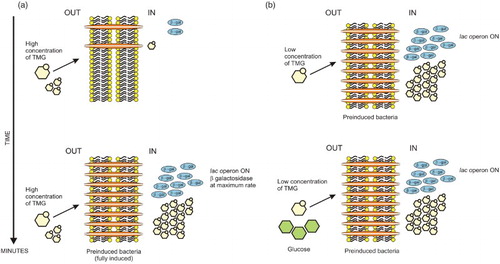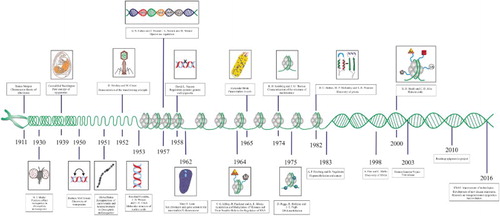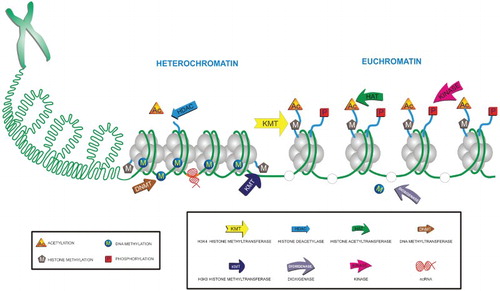Figures & data
Figure 1. Scheme of the induction of the β-galactosidase synthesis in E. coli. (a) At high levels of TMG in the medium, cells rapidly reach the maximum rate of synthesis of β-galactosidase (full induction). In few minutes, the concentration of TMG inside the cells is notably higher than in the medium (about 100 times more). (b) At low levels of TMG (top panel) and in the presence of glucose (lower panel), preinduced bacteria maintain a high internal inducer concentration, and the synthesis of β-galactosidase and galactoside permease (in orange) remains in a high rate (there is no inhibition of the induction).

Figure 2. At low concentration of TMG, the induction of the lac operon is presented as an all-or-none phenomenon, a bacterium is fully induced and makes β-galactosidase or is uninduced and makes no β-galactosidase. (a) In the presence of a low concentration of TMG, all progeny of an induced bacterium are induced. Nevertheless, at low concentration of inducer, not all bacteria can be induced. Uninduced cells divide faster than those induced and their progeny remains uninduced, generating two populations of cells coexisting in the same culture. For Novick and Weiner (Citation1957), this phenomenon has a resemblance to mutation and today is considered an example of epigenetic inheritance through generations. (b) Scheme of the bacterial induction at low concentration of TMG. The formation of the first galactoside permease protein is a critical step in TMG accumulation and in the induction process.

Figure 3. Timeline of the principle events in the development of epigenetics. A long journey has been traveled since Waddington coined the concept of epigenetics (for details see the text).

Figure 4. Major components of epigenetic regulation in eukaryotes. The interaction between the constituents of the epigenome and the environment controls gene expression in eukaryotic cells.

Figure 5. Chromatin and epigenetic modifications of DNA and histones. The components of epigenetic code and ncRNAs orchestrate the remodeling of chromatin. The delicate balance between heterochromatin and euchromatin is coordinated through the writers and erasers of each epigenetic modification. For instance, DNA methyltransferases and dioxygenases, and HATs and HDACs in the case of DNA and histones, respectively.

